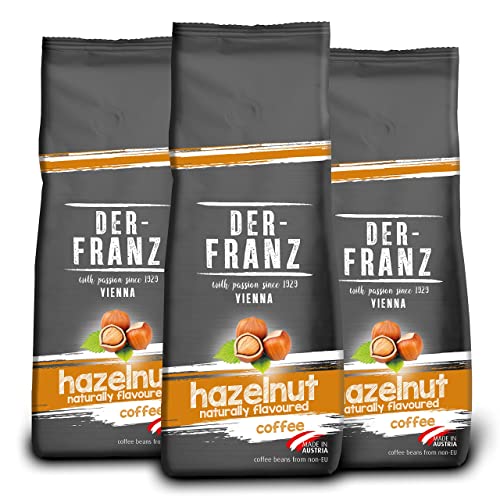Who Is Responsible For A Types Of Coffee Beans Budget? 12 Tips On How …
페이지 정보
작성자 Carmen 댓글 0건 조회 15회 작성일 24-10-09 16:41본문
 Types of Coffee Beans
Types of Coffee Beans Behind every cup of coffee that we drink there are carefully graded beans. These beans are graded based on the size, color and shape.
Behind every cup of coffee that we drink there are carefully graded beans. These beans are graded based on the size, color and shape.The AA rating is given to coffee beans that fulfill the above criteria, with the exception that they can't contain more than 3 defects (quakers). They are typically Kenya AA beans.
Arabica
Arabica coffee beans are also known as Coffea Arabicica and are the most coveted coffee in the world. Legend has it that coffee was first discovered in Ethiopia when a goat herder noticed his herd's dancing more vigorously after eating the fruit of the coffee bean plant. This led him to experiment with roasting the seeds and then brewing the coffee, resulting in the drink which we enjoy today.
Although a variety of coffee plants are available There are only two species that are used as the basis for our favorite coffees: robusta and arabica. The flavor of the final beverage is usually more appealing with the first.
There are a variety of different arabica cultivars, with every one having their own distinct flavor profile. Typica and Bourbon are two of the most sought-after arabica cultivars. The other arabica varieties were derived from these two varieties, either by natural mutations or through deliberate crossbreeding. Scott Labs developed the SL28 cultivar in Kenya that is renowned for its distinct chocolaty flavor.
The flavor of an arabica variety is determined by the climate in which it is grown, and also how it is processed and roasted. For example, the type of shade a tree gets along with its altitude and soil composition will all play a major role in the final result.
Robusta
Robusta coffee beans unroasted beans (Coffea canephora) are the second most sought-after variety of coffee beans. They are commonly used in instant coffees, and contain twice the amount of caffeine as Arabica Coffee Beans. They are also used in many espresso blends, particularly for caffe latte and cappuccino.
The Coffea Canephora plant originated in Sub-Saharan Africa, but it is now grown throughout the world. It can grow at lower elevations and can tolerate higher temperatures than the Arabica cheap coffee beans plant, which makes it a more suitable crop for farmers. Vietnam is the largest producer of robusta followed by Brazil and Indonesia.
The robusta plant makes a wonderful coffee, but it's not popular with cupping enthusiasts due to its bitter taste and burnt rubber notes. It's often regarded as an inferior Coffee beans for sale and a majority of the major coffee companies utilize arabica beans to make their premium products.
The demand for gourmet coffees is growing and small roasters are experimenting to benefit from its superior qualities. Our Valhalla Java coffee and Death With Coffee dark roast coffee beans are two examples. Both are exceptional robustas that blend with arabica to create the perfect balance of strength and flavour. These are coffees from Uganda which is a nation where robusta has been cultivated for a long time. You can learn more about them here.
Liberica
Liberica coffee beans are rare and rarely used throughout the world. They are less than 2% of the global coffee consumption and are often overlooked since they don't have as much caffeine as Arabica and Robusta do. These beans have a distinct taste that many coffee drinkers find irresistible.
Liberica coffee beans, though extremely scarce, are still quite popular in some parts of Asia. The most common place for these beans is in Malaysia and Indonesia where there is a large Muslim community. The coffee industry in these countries has traditionally been extremely strong and coffee after prayer is a part the tradition.
Liberica coffee beans london's roots go back to the 1890s which was the time when a global epidemic caused by coffee leaf rust decimated the arabica crop. This caused the coffee industry to seek out a more resilient species that could thrive in tropical climates, and they soon discovered the Liberica plant.
Liberica plants are resistant to disease and pests which makes them a great replacement for the devastated arabica crop. Liberica can also grow in lower altitudes and high temperatures which allows it to thrive in the climate of Southeast Asia. This is the reason why, today, most of the coffee that is produced in the Philippines, Indonesia, and Malaysia is derived from Liberica beans.
Excelsa
Although it's rare for coffee lovers to come across excelsa beans in their cups, these more rare beans are gaining a reputation for their unique flavor. According to Komal Sable, a fifth generation coffee farmer with South India Coffee Co. They are "a variation of the liberica species with the same teardrop shape, but a smaller size." However despite this resemblance to the family it's important to know that excelsa is technically not a distinct species.
So, it's little bit confusing as to how excelsa beans should be classified. It's this confusion that's been the reason for the beans' lack of presence in the contemporary world of coffee. Due to this, many roasters, farmers, and brewers aren't sure how to cultivate and utilize these beans properly.
It's up to each individual to decide if he or she likes the flavor of excelsa, and it can take a while to find the right blend. The most important thing is to remain open to new ideas and give every kind of coffee a go until you discover one you truly love. When you do this you'll have the chance to discover the wide possibilities that these unique beans can provide. It's a journey that's well worth the journey.
댓글목록
등록된 댓글이 없습니다.